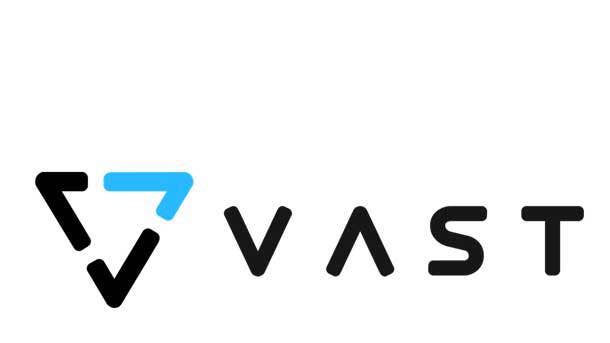Vast Data CEO Renen Hallak On Not Needing $83M, Competing With Investor Dell
Renen Hallak tells CRN his company has plenty of money in the bank and took the new funding round to reassure everyone the company is here to stay. He also says his company has two strategic investors, Nvidia and Dell, the latter of which never thought it was investing in a future competitor.

Aiming High
So what does a storage startup that has plenty of cash in the bank and which is already cash-flow positive on fast-growing revenue want with a new round of funding? The answer, in the case of New York-based Vast Data, is an opportunity to assure its stakeholders--customers, potential customers, and channel partners--that it is a company that is here to stay.
At least that’s what CEO Renen Hallak told CRN. Vast Data has only been in the market a couple years with its Universal Storage technology that provides all-flash file and object storage with exabyte scale, but it is already cash-flow positive, something very few IT startups still in their hyper-growth phase can claim. Despite that, the company on Tuesday unveiled a D-round of funding of $83 million, giving the company a total valuation of $3.7 billion.
“We’ve been growing 4x year-over-year into very high numbers, or just around $100 million dollars in terms of the software run rate we closed out last year,” Hallak said. “And we closed out last year cash flow-positive, which is usually not the case. You don’t usually grow at 4x year-over-year and stop burning money.”
Hallak, in a wide-ranging conversation with CRN, talked about the company, its strategy, plans going forward, and its strategic focus on the AI and analytics storage market which needs high-performance, highly-scalable storage. He also talked about strategic investors including Nvidia, which needs high-performance storage to meet the AI workloads running on its GPU-based technology, and Dell, an early investor which probably never realized it was investing in a future competitor.
For a look at this very unique storage play, one that is nearly all focused on the channel, click through the slideshow.

What is Vast Data?
We’re on a mission to build the next great infrastructure company. We started with storage and specifically breaking the trade-off between capacity and performance in storage, allowing our customers to not need to think about storage anymore, and to be able to have fast access to the entirety of their datasets. With machine learning and deep learning, the old way of doing things, which was to choose a very small subset of your data that was on a fast system and then everything else was underneath that, and then every everything else was done in an archive, data wasn’t really accessible. That doesn’t work for these applications anymore.
And so that’s what we’re doing. You have a single system that is bigger than anything that came before, more scalable, more resilient, faster, as affordable as the most affordable systems, and very, very, very easy to use. In fact, we manage the systems for our customers. They don’t need to do anything. And so we basically allow them to build cloud infrastructure in the way that they would like rather than lean on public clouds or legacy infrastructure.

Vast Data closed a funding round for $83 million, giving the company a valuation of $3.7 billion. How does an $83 million round of funding translate to a $3-plus-billion valuation?
So what happened was, we still have all of our round B and round C money in the bank. So we had $140 million or so dollars in the bank when we took in this new funding round. And so we didn’t need a lot more money. So we took in less money, $83 million, than what would normally be the case with a $3.7-billion round. We got less dilution as a result. And we got the new valuation, which is mainly an indication of the growth that we’ve been seeing over the last two years, combined with efficiency. We’ve been growing 4x year-over-year into very high numbers, or just around $100 million dollars in terms of the software run rate we closed out last year. And we closed out last year cash flow-positive, which is usually not the case. You don’t usually grow at 4x year-over-year and stop burning money.
So what's the total investment in the company then?
Around $260 million or $265 million.

So if you still have, I think you said, $140 million in the bank before this round, why did you need this round?
So it’s not for the money. We did it as a signal to customers, to partners, to potential customers. We want everyone to know we’re here to stay and we’ll be here to serve them forever, and they can be comfortable partnering with us and making large investments in our products. And the high valuation, I think, also makes them feel comfortable that we’re not going to be acquired by one of the companies that they don’t like.
Any examples of what those companies might be? The ones that your customers don't like?
No, I can’t mention their names.
So is this a signal that maybe Vast Data is ready for an IPO?
I think we’ll be ready soon. But we don’t have any plans to IPO anytime soon. We love the fact that we’re private and that we have a long-term view of things. We can innovate for our customers for the long-term. We can work with our customers for the long-term. We don’t have that 90-day window that a public company has. And we can also move a lot faster. We don’t have regulations and compliance slowing us down. And so probably we’ll not go public in the next year or two, but after that, we’ll see.

So what are you seeing for 2021? What are some things that are driving your business?
In two letters, I would say AI. We’re seeing a lot of AI starting to actually happen. One of our biggest partners is Nvidia. In fact, they’re investors in the company also, and they’ve doubled down as part of this round. They’ve increased their share. And we’re seeing a lot of AI projects that were just in the garage, so to speak, forming into real projects with tens and hundreds of petabytes of data behind them. We’re seeing a lot of growth in the financial space, in the life science space, as well as the government space. We just set up a federal subsidiary. Last week we announced it. And so we have a separate team working on that part.
In R&D, we’re also obviously adding a lot of features and functionality in order to serve all of the different workloads that our customers want from us. But we’re also starting to think about what’s the next wave of innovation that we want for our customers. And it is also around AI and building that next-generation infrastructure.

You talked about some projects going on in AI. Can you give an example of such a project?
Of course. We work with quite a few hedge funds. One of them is Jump Trading in Chicago. They do a lot of machine learning and data analysis AI-type projects with GPUs and with Vast. We have an autonomous driving car company out in the Bay Area that won’t let us use their name but which is also running AI projects on Vast Data. Quite a few. We have government agencies like the National Institute of Health and NOAA (National Oceanic and Atmospheric Administration) and NASA all doing a massive data analysis.
Are those projects channel partner-led or not?
All of them are channel partner-led. In fact, last time we talked was right after our previous round of funding, at which time we didn’t have any channel people yet in the company. Since then, we’ve hired three, and we are in the process of hiring two more. And so we’ll have five people on the channel team. Almost 100 percent of what we sell is through the channel unless a customer specifically asks us not to. And the channel has been our biggest growth engine. We reached $100 million dollars of software sales in two years with less than eight salespeople. The only way we could do that is by leveraging the force multiplier of the channel.

Does Vast Data actually sell the storage capacity to customers or is it offered on a consumption basis?
That’s a very, very good question. In fact, about a month ago we announced our new Gemini business model. With Gemini, in the same way that we dis-aggregate the architectural level from capacity and compute from capacity and performance, we’re now dis-aggregating hardware from software. And so our customers can buy their hardware just like a cloud provider would at cost, without any markup. And the only thing that they buy from us is the software on top of that. And we price that software subscription based on the capacity that they need so that they can grow them independently.
And can they grow and shrink capacity as they are needed?
Sure. We don’t have any customers that have shrunk it yet. In fact, one of the metrics that we’re proud of is the fact that when customers start buying, they buy a lot more very, very quickly. In the investment world, there’s a concept called net dollar retention, which basically looks at how big are the expand deals versus the initial land deal. And any number over 100 percent is considered good. And we’re at 330 percent.

You mentioned Nvidia as one of the investors in the company. Are there any other strategic investors in Vast Data?
Yes. Dell EMC was one of our first investors from the very early days. The rest of the investors are venture capital.
Now do either Dell or Nvidia actually use Vast Data products or are they just investing for now?
I don’t believe they are. Dell for sure is not. Dell is a competitor. At Nvidia, we do have a system in their lab, but I think they’re mainly using it for testing.
Isn’t it unusual for a company like Dell to invest in another company that it competes with?
It’s a good question. They invest a lot in their space, especially in early stage startups, because they want to know what’s going on. I don’t believe that they expected us to be this successful, to be honest, and that we would compete with them at this level of intensity. But yeah, they invested in us when we were just an idea on a napkin.

Anything else we need to know?
Daniel Bounds, our new vice president of marketing, told me that I have to tell you that our mission is to build the next great infrastructure company. So if you write that down somewhere, he’ll know I did a good job.
OK. We'll get his name in there and make him happy somehow. Now for the rest of the year what are you expecting? Any new products, any teasers you can give us?
Sure. We’re constantly innovating. We’re adding more and more protocols into the product. We’re expanding into more and more workloads as we make our way into the large enterprises, the big banks, the big pharmaceutical companies. A lot of more security-oriented features. And we’re growing internationally. We were focused only on the U.S. until recently. We now have teams in the U.K., Germany, France, Australia. South Korea, we’re hiring into. Japan, we’re hiring into.